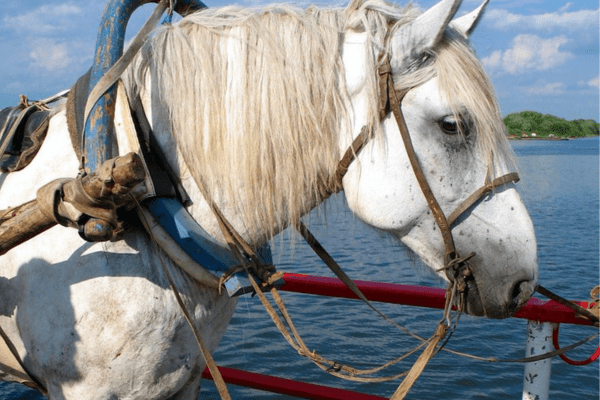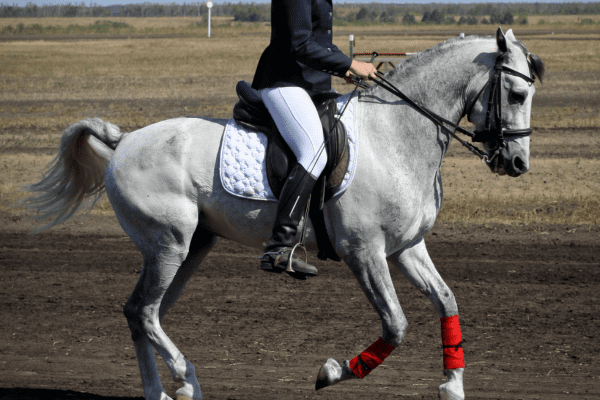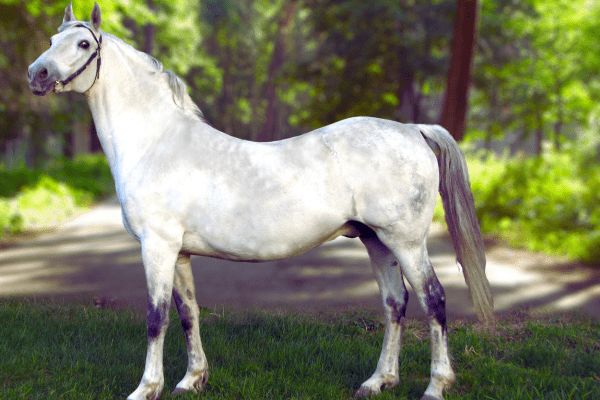Orlov Trotters were an impressive demonstration of Russian horse breeding excellence, marrying Arabian stallions with hearty European mares for optimal breeding results.
Famous for their extraordinary speed and nimbleness, these exceptional horses not only excelled in harness racing but also provided elegant carriage service to Russian nobility across vast terrains as a symbol of lasting equestrian excellence.
Count Alexei Orlov, an 18th century noble from Russia, created the Orlov Trotter breed – and eventually established it as an icon of Russian horse breeding. The breed’s creation is not merely a product of selective breeding but a testament to a visionary’s dedication.
Count Orlov merged various breeds, including the Frederiksborg and other European trotters, to manifest a horse that could not only showcase a luxurious appearance but also uphold a remarkable speed and stamina on the track.
History:
Establishing the Lineage:
A Gift from Empress Catherine II: The history of Orlov Trotters can be traced back to Empress Catherine II’s generous donation of land for Count Alexei Orlov’s future Khrenovsky Stud Farm.
Stallion Smetanka: Acquired from Ottoman Empire, Arabian stallion Smetanka played a pivotal role in creating an exceptional lineage, even after his untimely demise.
Breeding Philosophy and Protectiveness:
Count Orlov adopted a breeding philosophy known as konnozavodstvo, marked by thoroughness and careful selection, to cultivate an aesthetic beauty combined with dynamic functionality through crossbreeding with various international breeds.
Orlov’s Non-Sale Policy: Boasting an intense protective instinct, Orlov established a firm non-sale policy of selling only geldings; doing so enabled him to carefully guard his foundational stock while controlling its propagation.
Twists of Fate in the 19th Century:
Orlov Trotters under Anna, Orlov’s daughter, experienced periods of both growth and decline based on different competencies and approaches to horse breeding.
Decline and Intervention: Intense crossbreeding for size diversification caused a decline in quality that prompted the Russian Crown to intervene, although initially worsening the condition. In 1845 they took charge and instituted measures designed to revive them – although initially this only made matters worse.
The Elevation on Global Stages:
At the tail-end of the 19th century, Orlov Trotters quickly made their mark in international performance history thanks to groundbreaking events like Beduin’s performance in Paris.
Exponential Popularity: Their fame quickly expanded not only within Russia’s borders, but across Europe – standing as testament to their superior form and function.

Trials, Tribulations, and Triumph:
World War I and the Russian Civil War left an indelible mark on human history and also left their mark on horse breeding, pushing Orlov Trotters nearly into extinction.
Revival Efforts: Beginning around 1920, with policy initiatives such as prohibiting crossbreeding reviving this breed to ensure its continued dominance across Russian terrains. Revitalisation efforts: Following World War II, dedicated efforts supported by policy interventions like crossbreeding restrictions were employed to bring back life into this breed ensuring its return.
The 20th Century and Beyond:
The 20th century presented new challenges for Orlov Trotters, such as mechanized agriculture reducing their need and wars reducing their numbers.
Enduring Legacy: Through all the challenges and fluctuations in fortune, the Orlov Trotter stands as an unshakeable symbol of Russian perseverance, cultural heritage, and unyielding commitment to maintaining a legacy which combines royalty with nature’s raw, unbridled power.
At first glance, the Orlov Trotter represents an epic tale of opulence, strategic breeding, decline, revival and resilient perseverance; making its journey through history with an unstoppable spirit of endurance and grandeur.

Characteristics:
Step into the world of Orlov Trotters and discover their captivating combination of strength and grace. Not just horses but an iconic symbol that symbolizes both robustness and elegance – Orlov Trotters truly are an impressive spectacle of equine excellence.
Striking Physical Elegance:
Orlov Trotters exhibit undeniable physical allure. Breeding stallions boast impressive statuesque qualities with average heights at 161.4 cm at the withers and body lengths up to 164.6 cm; their mares also make an impactful statement with heights between 160.3 cm and 163.6 cm; each measurement adds something special to their presence.
Orlovs exude visual charm beyond simple measurements. Their heads reveal rich Arabian heritage while expressive eyes capture attention. Plus, the prominent withers, broad croup and muscular torso tell a tale of strength, endurance and imperial lineage that creates an aura of pure majesty.
A Colorful Canvas of Coat Transition:
Delight in the beautiful metamorphosis of the Orlov Trotter’s coat, which presents a fascinating narrative of evolution from dark to light.
Birth to Maturity: Orlov foals enter this world covered in darker hues, gradually transitioning into celestial grey as they live their lives. This process not only physically changes them over time but symbolically parallels their journey of growth and development.
Orlov Trotters exhibit a fascinating spectrum of shades as adults, from grey (46%) and black (28%), through rich bay (20%) to occasionally vibrant chestnut (5%) – each hue providing insight into their lineage and legacy.
Immortalizing Strength and Vigor:
Deeper examination reveals the robust nature of Orlovs. Their robustness is evident not only by their considerable chest and cannon bone circumferences (186 cm for stallions and 20.4 cm for mares respectively) but also in their muscular legs, prominent joints, and clearly defined tendons.
The Orlov Trotter, a breed worthy of admiration and respect, does more than trot; it parades through time displaying strength, beauty and evolutionary magnificence. These remarkable dogs don’t simply race on tracks; instead they gallop through history captivating all with every stride telling its own unique tale of journeying along its remarkable journey.



